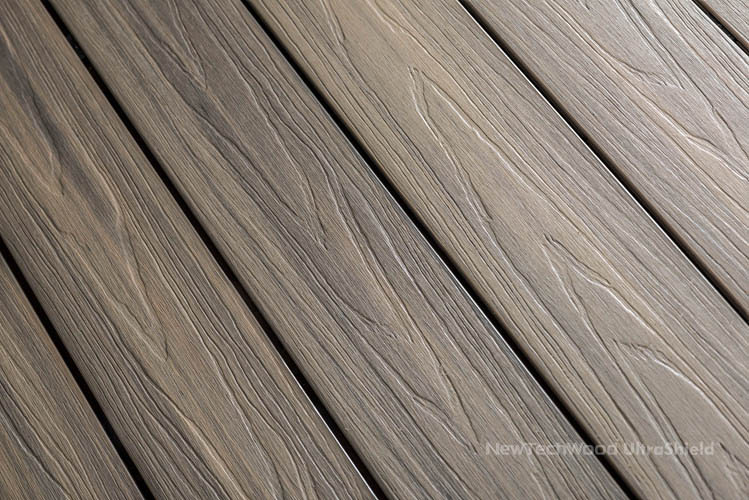News
Composite vs. Timber Decking and Fencing – Is Timber Worth It?
If you’re planning on installing a deck or fence in the near future, or if it is time to upgrade your current installation, you’ve got a decision to make. Will you go with traditional timber, or will you choose composite materials? Both of these options have their share of benefits and drawbacks.
Read on to learn what you need to know to make an educated decision for your property and make a decision between innovative composite and traditional timber decking.
Timber Decking & Fencing: The Benefits
There are plenty of reasons to choose timber as your decking or fencing material –
- It’s a highly versatile material – you can give your deck or fence a traditional and rustic look when stained or painted a certain way (think white picket fence or deck with lightly stained rustic timber beams), or a luxurious and slick look using a different stain or paint (think smooth buffed dark stained timber)
- You can easily strip one stain or colour and change it up if you get tired of your first choice
- Timber is easy to work with – cut, shape, sand, stain or paint – and is readily available, making it a relatively inexpensive option
- If you’re looking to save money (at least in the short term – more on this later) it can be a good choice.
Timber Decking & Fencing: The Drawbacks
While timber has a lot of draws, it also has a lot of drawbacks –
- While timber looks great to begin with, it requires a lot of maintenance to keep it in good condition. Annual painting and staining add to the cost of the deck or fence each year – both in terms of the money spent on materials and the labour or time spent by yourself
- Even with annual maintenance, timber is prone to weathering easily. It will begin to break down, warp, weaken and rot in the elements and boards will likely still need to be replaced every few years to extend the life of your deck or fence – more additional cost
- For the environmentally conscious, producing timber does require the cutting down of trees, and not all manufacturers practice sustainable methods. Be sure to research the organisation before making a decision to ensure that their practices align with your values.
Composite Decking & Fencing: The Benefits

Composite with real look and feel of timber
While composite is a newer material, it is gaining in popularity and has become a popular choice because:
- If you choose the right composite you essentially get all the aesthetic benefits of timber, with none of the maintenance drawbacks. Some lower quality composites don’t have this feature down quite yet – they can look more like plastic boards with the ‘wood-look’ essentially printed on, so make sure to see and feel the composite before you buy. Higher quality composite boards (like NewTechWood Decking and Fencing) look and feel almost indistinguishable from real timber with tangible and visible grooves, knots and colour variations in the grain
- Composite is highly durable and maintenance-free – no annual staining or maintenance required. High-end composites, (again, like the ones used by NewTechWood), come fully capped, meaning that they have a protective layer around all four sides. This added layer of protection makes composite decks and fences UV-resistant, fade-resistant, and aging-resistant. Basically, composite material is immune to all of the hazards that can break down timber over time, making it a durable, low-maintenance choice that can stand up to the elements throughout the years
- Like timber, composite decking and fencing materials are also relatively inexpensive. But unlike timber, as we mentioned, there is no maintenance needed, meaning no additional costs added to the initial cost, making composite even more economical in the long-term
Composite Decking & Fencing: The Drawbacks
There really aren’t many drawbacks to composite, but there are a few to mention –
- Composite materials tend to be more expensive than cheaper timber, but are on par with better-quality timber fencing or decking boards
- Composite fencing and decking materials can’t be stripped and re-stained or painted like timber can, so make sure to make the right choice of colour or stain to begin with
- At the lower end, composite materials cannot closely replicate the look of timber, resulting in an appearance that does not quite look natural. But as we mentioned above, this isn’t an issue with better quality composite products like our UltraShield decking and fencing
Composite vs Timber Decking: Who comes out on top?
Composite timber and natural timber have their own unique selling points. However, many people would be of the opinion that the drawbacks of timber outweigh the benefits, and in the end it’s just not worth the effort and cost of upkeep.
Composite on the other hand has far more benefits than it has drawbacks. It’s both relatively inexpensive in the short term and completely inexpensive in the long term. And it won’t cost you time or labour to maintain. We even offer a 25-year warranty on our composite decking and fencing!
If you’d like to find out more about NewTechWood’s quality composite fences, decks, wall cladding, and screening, visit our Perth showrooms, give us a call or use our online contact form and we’ll be in touch!